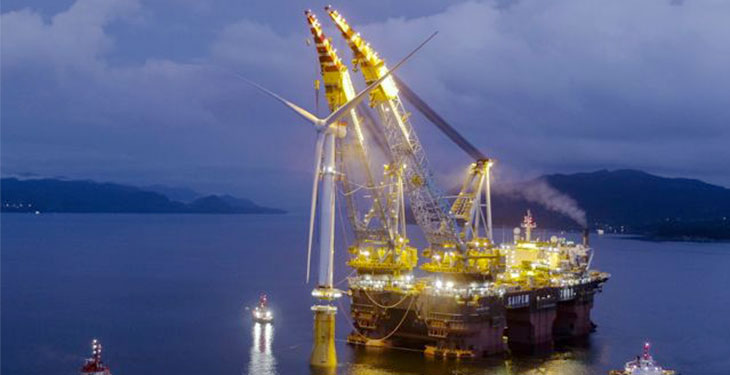The world’s first floating wind farm – Norwegian energy giant Statoil’s 30MW Hywind Scotland array – has been switched on off the Scottish northeast coast, marking the start of a new chapter in the fast-paced narrative of a sector that installed its maiden industrial-scale prototype less than a decade ago.
Made up of five 6MW Siemens Gamesa turbines topping 75-metre-long steel spar-buoy foundations moored to the seabed in 100 metres of water, the project – formerly known as Buchan Deep – will produce enough power for some 20,000 households from its site 24km off Peterhead.
But it is the longer-term potential of floating wind that will be under the microscope here in the coming weeks and months, according to rechargenews.com. Hywind Scotland is a staging post for Statoil, with its floating wind “roadmap” pointing toward a 100MW development being online by 2023 and a 500MW project live before 2030 – by which date the company forecasts the market will have grown to more than 12GW.
“Hywind can be used for water depths up to 800 metres, thus opening up areas that so far have been inaccessible for offshore wind. The learnings from Hywind Scotland will pave the way for new global market opportunities for floating offshore wind energy,” stated Irene Rummelhoff, executive vice president of Statoil’s New Energy Solutions business.
The 11,500-tonne Hywind Scotland units, which fly Siemens Gamesa SWT-6.0-154s, were assembled with the Saipem 7000 crane vessel at Bassoe Offshore’s Stord yard in western Norway over the summer, before being towed across the North Sea to the project site for installation
